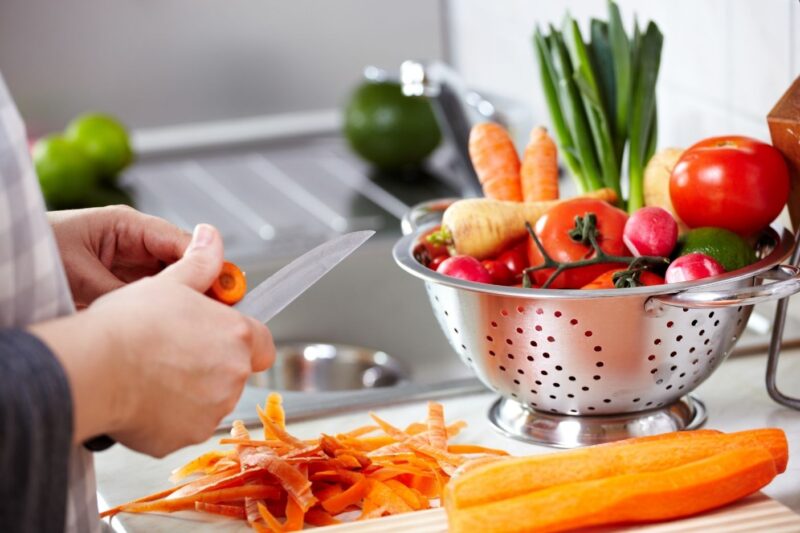Food safety, also referred to as food hygiene, is the practice of handling, preparing, and storing food and beverages to minimize the chance that customers will contract a foodborne illness. Several rules must be followed to avoid food becoming contaminated and resulting in food poisoning.
Given this, ensuring food is safe for human ingestion is probably the most important step in food preparation. This includes everything from “farm to fork” or from the farms to your plate. This means proper food hygiene is crucial in restaurants, retail stores, food factories, and homes. The kitchen floor must always be clean. You can use a mop bucket and mop for this.
The general public is becoming increasingly conscious of food safety, and news organizations report on food outbreaks and recall much more frequently. That’s why everyone involved in food handling must prioritize food safety. This will help prevent or reduce food poisoning significantly.
Having said that, let’s discuss food safety practices that everyone should know.
-
Choose foods processed for safety.
While some foods, like fruits and vegetables, are best consumed raw, others can only be consumed after they have been well prepared. For instance, always choose pasteurized milk over raw milk, and wherever possible, choose fresh or frozen poultry that has been exposed to ionizing radiation. When you go shopping, remember that food processing was developed to increase safety and extend shelf life. Some fresh foods, like lettuce, require careful cleaning.
-
Cook raw food thoroughly.
Numerous raw foods, particularly birds, meats, eggs, and unpasteurized milk, may contain pathogens. The germs will be destroyed by thorough cooking, but keep in mind that the food must be thoroughly cooked to a minimum temperature of 70 °C. Put the chicken back in the oven to finish cooking if the cooked portion is still raw, close to the bone. Frozen meat, fish, and poultry must be completely thawed before cooking.
-
Avoid contact between raw food and cooked foods.
Even the smallest interaction with raw food can harm safely cooked meals. Direct contact between raw poultry flesh and cooked foods is one example of this cross-contamination. Additionally, it may be delicate. Don’t, for instance, prepare a raw chicken and then carve the cooked chicken with the same unwashed cutting board and knife. The pathogens could be reintroduced by doing this.
-
Store cooked food properly.
Make sure to store leftovers or items that need to be prepared in advance in either hot (near or above 60 °C) or cool (near or below 10 °C) environments. If you intend to keep food in storage for more than four or five hours, strictly adhere to this rule.
Infant foods should ideally not be kept in storage at all. Putting excessively warm food in the refrigerator is a typical mistake that has led to many incidents of foodborne illness. Cooked meals cannot cool to the core as quickly as they should in a refrigerator that is overloaded. Microbes thrive when the center of the food is warm (above 10 °C) for an extended period, quickly multiplying to disease-causing proportions.
-
Keep all kitchen surfaces sparkling clean.
Foods are incredibly susceptible to contamination; thus, any surface used for food preparation must be kept immaculately clean. Consider each piece of food, crumb, or spot as a potential source of bacteria. Dish and utensil-touching cloths should be periodically changed and boiled before reuse. Additionally, separate floor-cleaning cloths must be washed frequently. These are the best ways to keep the kitchen clean. You can also use a mop bucket and mop to clean the kitchen floor.
-
Wash your hands thoroughly repeatedly.
Before preparing food and after any interruption, especially if you need to change a baby or use the restroom, wash your hands thoroughly. Before handling other foods, wash them once again after handling raw meat, fish, or poultry. Additionally, before making food, bandage or cover your hand if it has an illness. Additionally, remember that common domestic pets, such as dogs, cats, birds, and particularly turtles, frequently harbor harmful infections that can spread from your hands into food. That’s why they should be a bit far from your cooking area.
-
Use safe water
Having access to clean water is crucial for both drinking and cooking. Boil water before making ice for beverages, or add it to meals if you have concerns about the water source. When preparing a meal for a baby, be very careful with the water you use.
